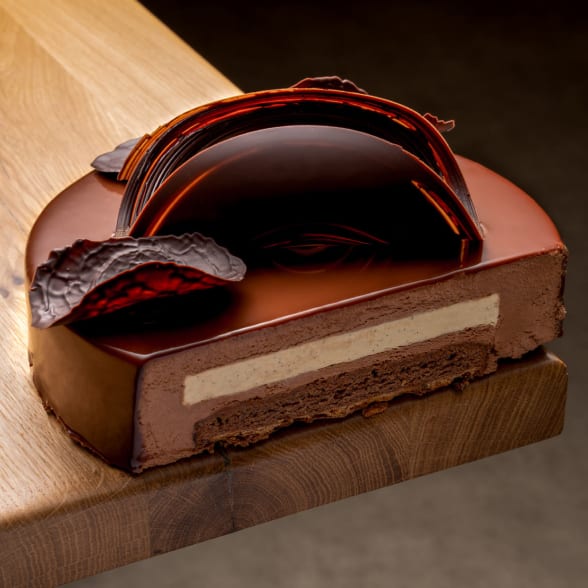
Professional Recipes
Our iconic creations will allow you to renew your offer by revisiting the great classics of pastry-making but also by offering you inspiring recipes to work with the raw material that is chocolate.
Contents :
It’s easy to get lost among all the different terminology used in the chocolate industry, from cocoa to cacao. Below, Valrhona gets you up to speed about cocoa so you have everything you need to know about this fascinating ingredient.
You probably know cocoa is made from the beans grown by the “cacao tree”, a small tree found in the tropical regions of Africa, South America and the Caribbean. The cacao tree’s fruit contains cocoa beans. Cocoa beans are especially important for chocolatiers because they use them to make products such as chocolate spread, cocoa butter and cocoa powder.
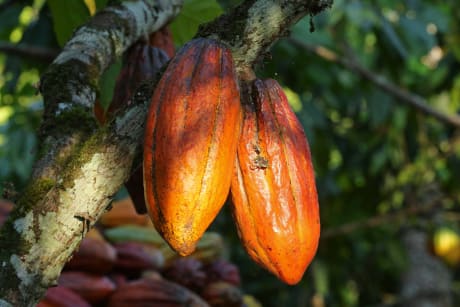
The earliest known traces of cocoa date back to 3000 BCE. Cocoa has been around for a very long time and has been eaten in one way or another for thousands of years. Recent archeological document have revealed that the Olmecs, Mayan and Aztecs drank it.
Cocoa wasn’t just used as a beverage, however – cocoa beans were also a form of currency and tribute, as well as being used in religious ceremonies and various rituals.
Ever since European conquistadors introduced cocoa to Europe from America in the 16th century, it has grown to become one of the world’s most loved ingredients. It’s now found in all kinds of products, from chocolate bars to ice creams and brownies. But where exactly do cocoa beans come from?
The cacao tree mainly grows in the shade of tropical forests and rainforests’ canopy. It comes from the tropical regions of Central and South America and can only grow in the conditions they offer. Nowadays, most cocoa production takes place in Africa, and Ivory Coast in particular.
The cacao tree’s fruit is called a pod. The pods are harvested when they are perfectly ripe, then opened with a sharp blow from a club to extract the beans. This is called de-seeding.
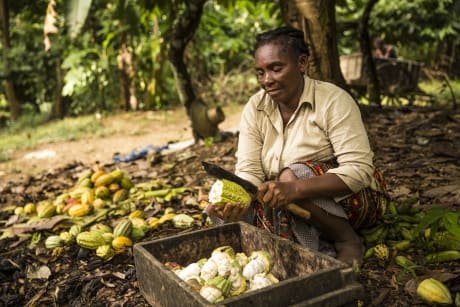
The beans first ferment for a few days in banana leaves. Fermentation is crucial because it allows the beans to develop aroma precursors. It’s also during the fermentation process that they lose their mucilage, a sort of white pulpy, viscous covering.
The beans are then dried for about two weeks. This shouldn’t be done too quickly or the beans will become acidic, but it shouldn’t be too slow either or they risk going moldy. When this happens, they turn brown.
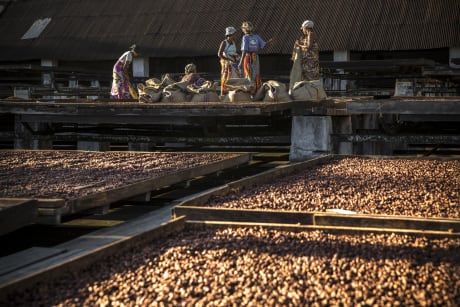
The beans are roasted, separated from their shell and crushed. This is how they develop their chocolatey aromas in readiness for processing.
The beans are ground down, refined and conched to create different types of chocolate. At this stage, we also add sugar - a chocolate-making essential - as well as ingredients such as milk in the case of milk chocolate.
Cocoa undergoes several transformations as it goes from the pod to the bar. It takes on a different form through each of these stages. Once they have been taken out of the pod, the beans are fermented, dried and roasted to develop their flavor. Beans are the key to cocoa’s many different forms.
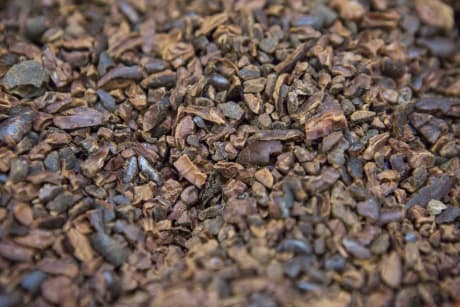
Grinding is one of the most important stages in the chocolate-making process. The beans’ outer shells are removed and a ventilated sifting system helps to separate out the embryos, shells and cotyledons from the seed pieces. These pieces are made into cocoa nibs. Nibs can be crushed into a cocoa paste or used as they are.
Cocoa paste (also known as cocoa mass or liquor) is made by conching cocoa nibs that have been ground down in a heated environment. Cocoa mass is a creamy 100% cocoa paste. Professional chocolatiers use it to intensify their chocolate’s cocoa flavor. It’s mainly this paste which is used to make products such as chocolate bonbons, dark and milk chocolate bars, and ice creams.
Cocoa powder is chocolate’s main ingredient. It’s made by pressing cocoa paste. By subjecting cocoa paste to high pressure, we separate the powder from the cocoa butter fat. The powder is mostly used in pastry-making, in cakes and as a decorative sprinkled topping.
Cocoa butter is the fat found in cocoa beans. Each bean is about 50% fat. By squeezing the paste in a hydraulic press, we can separate the powder from the cocoa butter. This fat is used very often to make different types of chocolate confectionery, as well as bars and spreads. Cocoa butter gives chocolate its sheen and fluid texture. This is why couverture chocolates are enriched with it.
Traditionally, we divide cocoa into three main varieties: Criollo, Forastero and Trinitario. According to this classification system:
However, this simplistic classification system is now obsolete, as advances in research have shown that there are actually ten genetic varieties of the cacao tree, all originating in the Amazon region of South America. They are Amelonado, Cacao Guiana, Contamana, Criollo, Curaray, Iquitos, Marañon, Nacional, Nanay and Purús.
This more precise classification system is essential in helping us make the best selections – for instance, some are better at resisting disease than others – and manage plantations.
These varieties differ both in their geographic origin and their morphological and genomic properties. For example, some have a predominant pod shape.

Our iconic creations will allow you to renew your offer by revisiting the great classics of pastry-making but also by offering you inspiring recipes to work with the raw material that is chocolate.
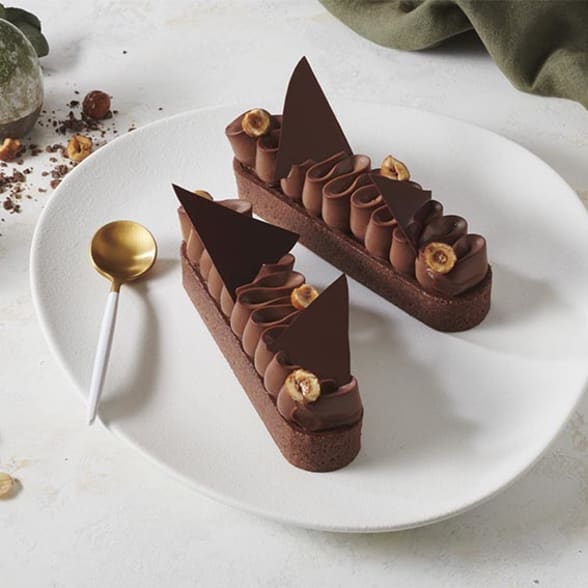
Are you a pastry lover? Let yourself be tempted by Valrhona's chocolate creations. Our detailed iconic recipes will guide you step by step through the design of your chocolate pastry.
You are using an outdated browser. Please upgrade your browser to improve your experience and security.
×